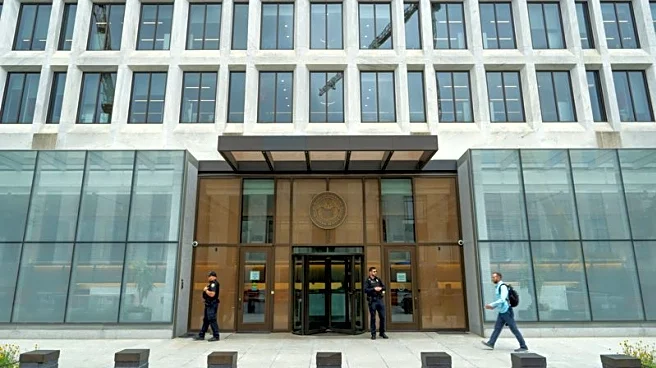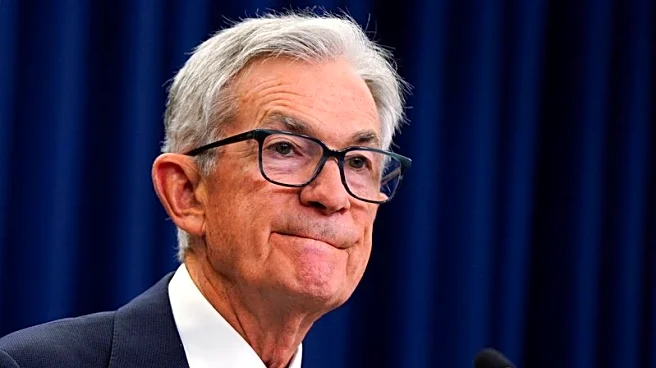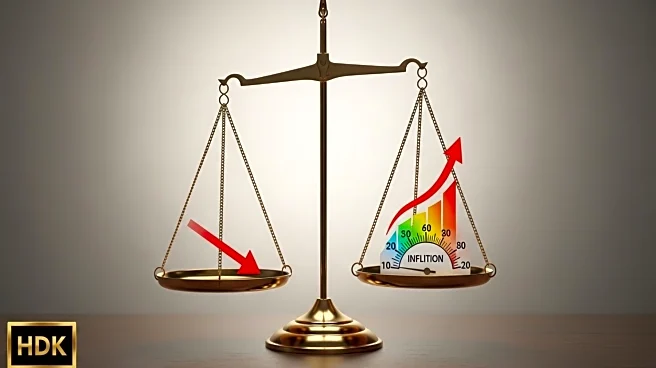What's Happening?
The Federal Reserve has reduced interest rates by 25 basis points, setting the federal funds target range at 4% to 4.25%. This decision, the first rate cut in nine months, aims to address a cooling labor market and persistent inflation above target levels. Fed Chair Jerome Powell emphasized that the move is a precautionary measure in response to shifting economic risks, rather than current data. The Fed's updated projections indicate modest GDP growth and a gradual decline in inflation, with the 2% inflation target not expected to be met until 2028. The decision reflects the Fed's dual mandate to support maximum employment while maintaining price stability.
Why It's Important?
The rate cut is significant as it highlights the Fed's concerns about the U.S. labor market and inflation dynamics. By lowering borrowing costs, the Fed seeks to stimulate economic activity and prevent further deterioration in employment conditions. The decision also underscores the Fed's independence amid political pressures, particularly from President Trump. The move could impact various economic sectors, including technology and utilities, which may benefit from lower interest rates. Additionally, the Fed's actions may influence investor behavior, with potential implications for stock market performance and asset allocation strategies.
What's Next?
The Federal Reserve's projections suggest further rate cuts may be considered if the labor market continues to weaken. The Fed remains committed to its dual mandate and will adjust policy as needed to support economic stability. Investors and businesses will be closely monitoring the Fed's actions and statements for indications of future monetary policy direction. The Fed's ability to balance its employment and inflation goals will be critical in navigating the current economic landscape.
Beyond the Headlines
The Fed's decision reflects broader economic challenges, including the impact of tariffs on inflation and the complexities of managing monetary policy in a politically charged environment. The Fed's emphasis on employment over price stability highlights the evolving priorities in economic policymaking. The decision also raises questions about the long-term implications of sustained low interest rates on financial markets and economic growth.












